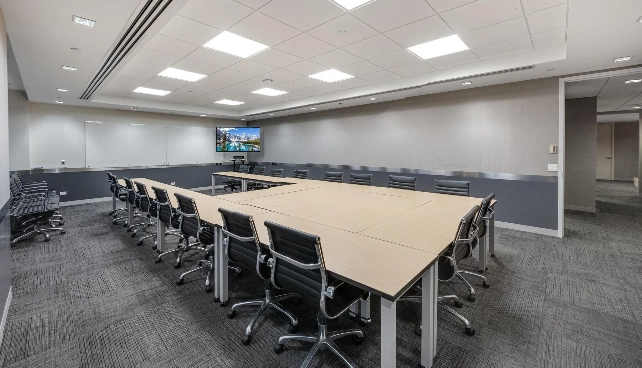Ergonomics increases productivity in the office by providing a workstation where employees feel the most physically comfortable. It also increases awareness of their postural habits. Their boost in energy, increased overall well-being, and ability to avoid work-related injuries increases their productivity and satisfaction.
Whether you are an employee or business owner, creating awareness of ergonomics in the office has many benefits. It increases productivity, avoids sick days, prevents worker’s compensation claims, and decreases healthcare costs among other things.
Staying mentally sharp at work is indeed very important. Physical fitness is also an important factor even if the work only involves a computer. There are many ways to improve workstations so that they provide the best ergonomic environment for an employee. Plus, even if you have a home office, this article also applies to you as ergonomics are important for all types of work environments.
Let’s review how ergonomics in the office helps to increase productivity.
What is Ergonomics?
The word ergonomics is derived from Greek roots and it translates to “the science of work.” This science focuses on the interactions of humans and other elements of a working system to optimize well-being and optimum performance. Ergonomics relates to work performed at the gym, in the kitchen, or simply in an office. It is a science that can be applied anywhere, even as you drive your car.
The study of ergonomics aims at reducing physical stress that results in injuries associated with a particular activity. In an office, overuse injuries are common due to poor posture while sitting in front of a computer and typing on a keyboard. Office workers develop a misaligned spine, have trouble with their wrists and elbows, and often have neck and back pain from extended periods of sitting.
Ergonomics prevents various musculoskeletal disorders that lead to poor job performance and missed workdays. By creating ergonomic workstations designed to help users maintain good posture, companies are able to see an increase in employee morale and overall productivity. At the same time, there are tools and tasks that office workers can implement themselves to ensure the application of ergonomics is being used. This involves having awareness of their posture and how they use their tools at work.
Are Ergonomics Costly?
Ergonomics can be applied in various ways that don’t necessarily require a high financial investment. There is no need for expensive fancy equipment or costly professionals. Due to ergonomics becoming increasingly popular, there is a marketing hype with various manufacturers creating ergonomic products that are not always backed by science.
Certainly, there are professionals dedicated to this science that help companies design office spaces that follow proper ergonomic principles. However, it is all about education and common sense. Although hiring a professional to design the workspace is easier, it is not necessary. With a bit of research, anyone can make sense of what is needed to create an ergonomic environment for employees.
Plus, practicing ergonomics is about the education of the individual. It is their postural habits that will make the difference between experiencing physical comfort at work or practicing poor habits that injure the musculoskeletal system.
The cost of implementing ergonomics in your office can be as costly or as inexpensive as you want it to be. The main investment is time and energy in learning about ergonomics, how to design a workspace, and what postural habits workers must practice. What really becomes costly for companies and employees are injuries and missed workdays.
What are the Benefits of Workplace Ergonomics?
In a clinical study published by ScienceDirect, researchers concluded that the successful application of ergonomics requires the enthusiasm and interest of all individuals involved. It requires a solid commitment from all employees to participate in this effort and to know how to implement it.
Let’s review some amazing benefits of practicing ergonomics:
- Boosts overall health
- Improves mental focus
- Increases productivity levels
- Decreases pain
- Improves quality of work
- Eliminates hazards in the office
- Increases employee engagement
- Promotes safety
- Makes employees more happy and healthy
The list above is much more extensive. Practicing ergonomics in the office provides many other physical, mental, and professional benefits. All benefit from ergonomics, the worker, the employer, and the organization.
Why Does Ergonomics Increase Productivity?
Ergonomics creates a well-designed workspace that promotes good posture, decreases exertion, eliminates awkward postures, decreases repetitive motions, improves reaches and heights, and decreases the need for high-force activities.
All of these considerations create more productive employees. They are able to work faster and more efficiently while having a more positive outlook. By practicing ergonomics, employees tend to make fewer errors and have higher levels of energy. Employees that can enjoy an ergonomic office feel a greater sense of satisfaction at work, which makes them more engaged and productive. This results in higher morale and a better corporate culture.
Ergonomics Decreases Costs
As employees are able to enjoy a better work environment, they become happier and healthier while at the same time, they feel physically strong and are able to prevent injuries. This allows companies to save a significant amount of money each year as production remains high and employees absences decline.
By preventing injuries at work, the company will experience fewer turnover rates and worker compensation claims. In addition, an ergonomic office boosts employee morale and creates a corporate culture of mindfulness and wellness. This is all reflected in the bottom line of the company’s profitability.
How Ergonomics Can Improve Quality at Work
According to CDC (Centers for Disease Control and Prevention), adjustable desks that provide both a standing and sitting position may reduce back and neck pain. Their research shows that by decreasing sitting time by 66 minutes per day, 54% of workers experienced less back and neck pain. This greatly improves the quality of their work.
Simply put, comfortable and healthy employees that feel good are able to perform better in their roles. They pay more attention to their tasks, feel energetic, and have the mental capacity to produce the best quality of all they do for the company.
Ergonomics Creates a Better Company Culture
There is no doubt that a place that provides a great environment for its employees promotes a strong and positive company culture. Employees are a company’s most valuable asset and how well employers take care of them shows in every aspect of the business.
Implementing ergonomics in the office provides employees with an environment centered on the well-being and comfort of the staff. Companies that use ergonomics to design their workstations are seen as caring organizations that put their employees first. When employees feel their well-being and safety are a priority, they will value and appreciate their jobs. Everyone will experience a better work environment when they feel taken care of by their company.
The Essential Elements of an Ideal Ergonomic Workspace
Both corporate office spaces and home offices can be designed with proper ergonomics. There are three major elements to consider when designing a workspace:
- An ergonomic chair
- A functional desk
- Good sitting and standing posture
Ergonomic Office Chairs
An ergonomic chair provides the user the ability to make adjustments to fit their body size and special needs. The chair should provide an adjustable seat height, arm support, seat depth, and backrest angle. All of these components must be fully adjustable to fit the individual. Some chairs even offer adjustable neck, backrest, and lumbar support.
Standing Desks
For office workers that spend a lot of time sitting, it is important to provide a standing desk so that they are able to alternate to a standing position. Avoiding prolonged periods of sitting is part of staying healthy and avoiding injuries.
An ergonomic desk that allows the user to easily switch from a sitting to a standing position needs to have the ability to adjust to different heights and body sizes. It will prevent the injuries and discomfort that can result from sitting for long periods of time.
Flexible Workstations
With today’s technological advances, we are seeing a surge in the quality of flexible workstations. They are designed to move with the user so that the person can focus on achieving their best work while staying healthy.
These innovative flexible workstations provide the options to sit upright, stand, or recline with your feet up. Some are even designed with a recliner chair that leans all the way back to a lying position while the flexible desk and keyboard move with the user. These flexible workstations use magnets to keep the keyboard and monitor in place even when the user is fully reclined.
Imagine being able to sit in a comfortable recliner while you perform your best work! Flexible workstations are revolutionizing the way we look at office work.
How to Set Up an Ergonomic Desk
To make your desk ergonomic, first, you have to evaluate how you spend most of your time in the office. Chances are that you spend your day mostly sitting in front of a computer. You may follow these steps to set up an ergonomic desk:
- Step 1 – Consider Your Natural Posture: Ask yourself how you feel the most comfortable. Be sure your head, shoulders, and hips align with your ankles to ensure your spine stays in alignment while standing.
- Step 2 – Adjust the Placement of Keyboard and Mouse: Your hands must be relaxed with wrists and elbows supported.
- Step 3 – Position Your Screen at Eye Level: This will prevent you from straining your neck in awkward positions.
- Step 4 – Adjust Your Chair: Be sure your feet can touch the floor and your lumbar spine is supported.
- Step 5 – Change to a Standing Position Frequently: To avoid sitting for too long choose a desk that allows you to perform work while standing.
How to Organize Your Desk for Maximum Productivity
Having your desk organized will allow you to use it properly for the most ergonomic workday. Start by clearing off your desk as much as possible. Use drawers to put things away and try to keep only the essentials. Keep everything you use frequently within your reach to avoid unnecessary bending and twisting.
Understand what elements you can incorporate that will bring you the most comfort. For some people, it is soft lights while others find the most comfort and relaxation from a humidifier.
FAQ (Frequently Asked Questions)
Does ergonomics really affect productivity?
Absolutely! Research with the government of Oregon published an OSHA report that details the benefits of ergonomics. The report states that ergonomic workstations decrease the primary risk factors for work-related injuries. This results in more job satisfaction, increased productivity, and higher profits.
What is the relationship between ergonomics and office productivity?
As employees feel more comfortable and relaxed, their productivity increases and they are able to produce higher quality work. An ergonomic workstation allows employees to provide their bodies with the physical support they need to carry on with the day. They experience a higher sense of well-being that reflects in their mental state. The better employees feel the more productive they will be.
Why are ergonomics important in the office?
The office has workstations designed for long periods of sitting in front of a computer. By creating an ergonomic workspace, employees are able to avoid injuries, prevent pain and tension, as well as improve their mental state. Prolonged periods of sitting in front of a computer can be very taxing on the body. An office is an ideal place to implement ergonomics for better productivity and employee satisfaction.
How can I implement ergonomics in the workplace?
Whether your company offers an ergonomic environment or not, it is up to you to be conscious of your posture and habits. It is very easy to implement changes to your workstation that will provide you with a comfortable place to work. You must make the necessary adjustments to the position of your desk, monitor, keyboard, and chair to ensure you can achieve and maintain good posture throughout the day.
One of the key components of proper ergonomics is your awareness of it. You are the key to maintaining good posture while doing any activity and being conscious about your body and how it is being used.
Corporate Suites offers furnished offices spaces, virtual offices & conference rooms in several prestigious locations across New York City and Philadelphia.





